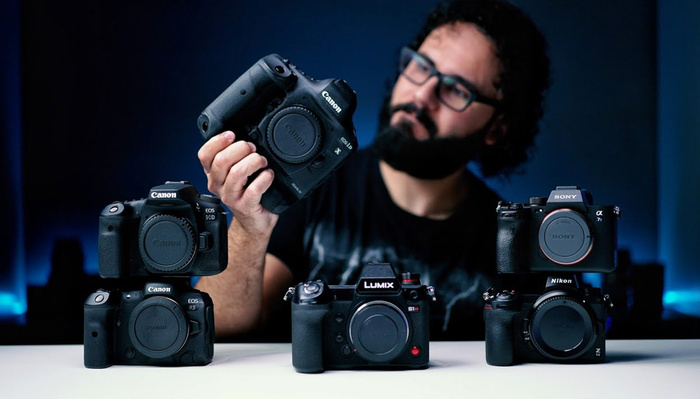
via Fstoppers https://ift.tt/2MKZjMU
What Cameras Will We See in 2021?

via Fstoppers https://ift.tt/3tfGT7S
Critique the Community Product Photography
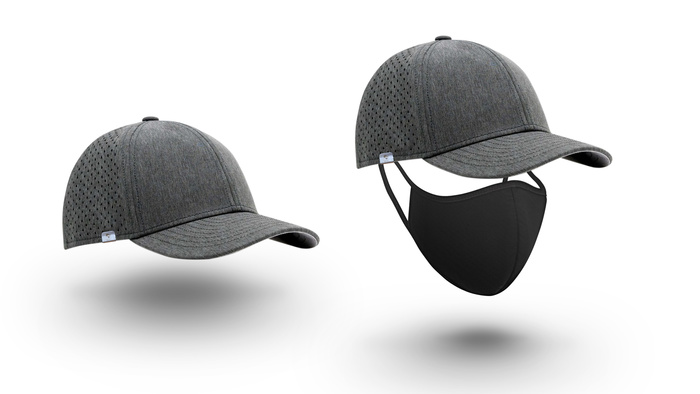
via Fstoppers https://ift.tt/3r2qJNg
A Review of the New Fujifilm X-E4 Mirrorless Camera

via Fstoppers https://ift.tt/3ctJNzR
A Review of the Sony FE 70-200mm f/4 G OSS Lens
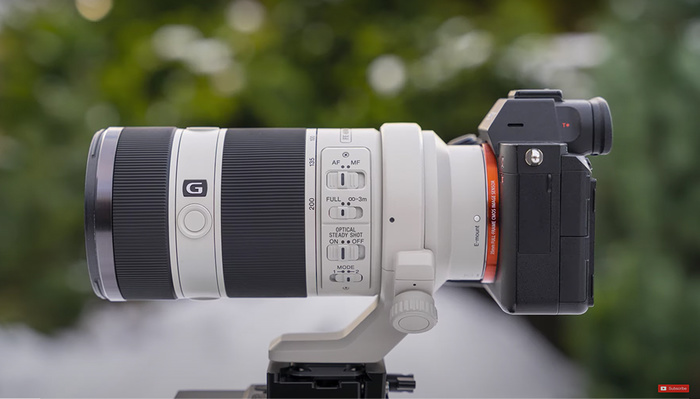
via Fstoppers https://ift.tt/2NWfg3P
Tamron 17-70mm f/2.8 Versus Sony 16-55mm f/2.8 G: Which Is the Better Lens for Sony APS-C Cameras?

via Fstoppers https://ift.tt/3reBtsd
5 Reasons To Buy a Nikon D850 — or Any DSLR — in 2021
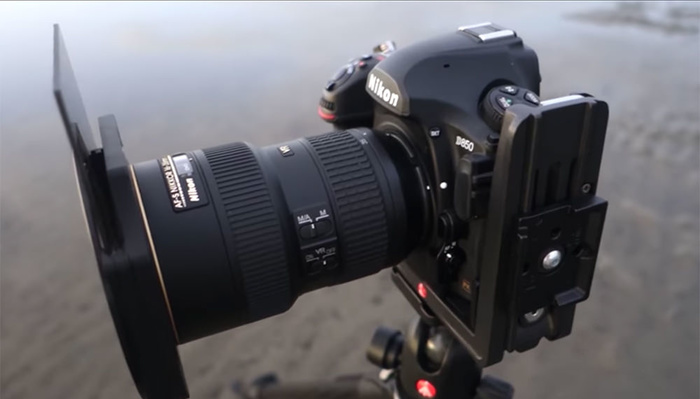
via Fstoppers https://ift.tt/2L3vQxk
Does Your Creativity Require Investment of Time and Money To Get the Most From It?

via Fstoppers https://ift.tt/3ctDhJA
Fstoppers Photographer of the Month (January 2021): Roy Iwasaki
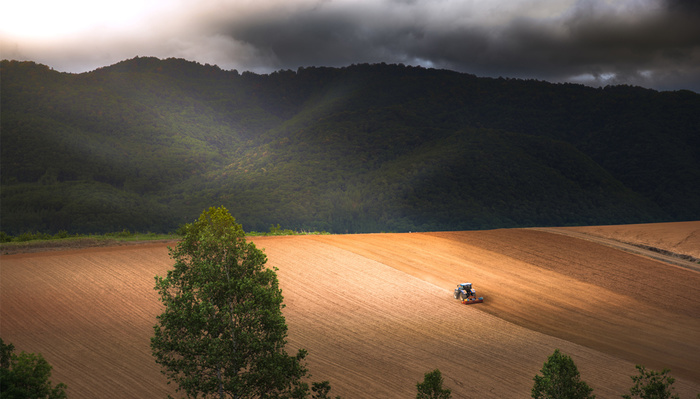
via Fstoppers https://ift.tt/3ctvOu2
Shooting at Night With a 50mm f/0.95 Lens that Costs Only $755
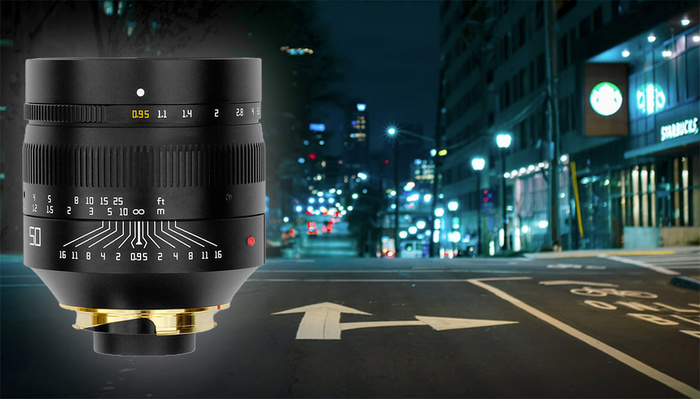
via PetaPixel https://ift.tt/3rcsg3B
Great Reads in Photography: January 31, 2021
via Fstoppers https://ift.tt/3aorYzC
What Are Focal Reducers and What Are They Used For?
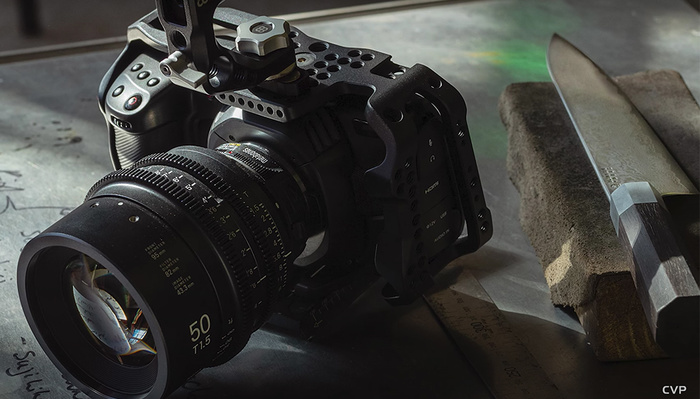
For most photographers, the digital darkroom is based around payware or subscription software from the likes of Adobe, Capture One, DxO or o...
Adobe Camera Raw vs. Sony Imaging Edge Desktop: Which is your best bet?
For most photographers, the digital darkroom is based around payware or subscription software from the likes of Adobe, Capture One, DxO or one of their many rivals. But if you're a Sony shooter, there's an option which is available entirely free of charge along with your camera purchase: Sony Imaging Edge Desktop.*
 |
| Sony Imaging Edge Desktop version 3.0's user interface. |
In this article, we'll take a look at how Imaging Edge Desktop compares with the 800-pound gorilla in the room, Adobe Camera Raw, whose algorithms also underpin the company's popular Lightroom Classic application. As with previous articles in this series, I'm limiting myself only to still image editing in the interests of keeping things to a readable length, and won't address features like image management, tethering or printing.
*Sony does include a version of Capture One, called 'Express,' with camera purchases, which we'll investigate in a future article.
The ground rules
This comparison is based upon the most recent versions of each application at the time of writing. For Adobe, that's Camera Raw 13.0 and Bridge 11.0. For Sony, it's Imaging Edge Desktop 3.0. My computer is a 2018 Dell XPS 15 9570 laptop running Windows 10 version 1909.
To ensure neither Adobe nor Sony had any advantage out of the gate, I've aimed to reproduce, as closely as possible, the look of already-processed images from our galleries, without any prior knowledge as to the recipes behind them.
 |
| Adobe Camera Raw version 13.0's user interface. |
I've chosen images from the Sony A7 III (ILCE-7M3) for use in this comparison, as its been available for long enough for Adobe to fine-tune its rendering, while its price tag and resolution are broadly similar to those of the Canon EOS R and Nikon Z6 used in my previous manufacturer software comparisons.
Sharpness and noise reduction were left at their default settings to avoid overcomplicating things, while lens corrections were enabled for both applications. Images processed in ACR were saved at JPEG quality 11, just as used in our galleries. For Imaging Edge Desktop, which offers a choice of just four different compression levels, I used the maximum quality.
The main differences
Of course, the most immediately obvious differences between ACR and Sony's Imaging Edge are their camera support and price tag. You already paid for Imaging Edge when you bought your Sony camera, so it's effectively free. While it only supports Raws shot by the company's own cameras, you can expect full Raw support for every Sony camera to be available pretty much immediately upon release.


Download the full ACR image here; the full Imaging Edge image here.
By contrast, ACR requires a recurring subscription fee. It supports a vast range of cameras from many manufacturers – including every single interchangeable-lens or large-sensor Sony camera made to date – but that support can sometimes take a while to arrive after the release of new models. It's also sometimes more limited than that in first-party software, especially for older models.
For example, while Adobe offers 'camera matching' profiles for most recent Sony cameras, it's not yet available for the recently-launched A7C. Nor has it been provided for any Translucent Mirror model made before 2014, or any Sony DSLR model at all.
A clean, modern interface with good multi-monitor support
Imaging Edge Desktop offers a twist on a modal interface. The initial install is merely a launcher which in turn installs and then launches separate viewer, editor and tethering apps. These can run separately or simultaneously, and can span multiple monitors. The editor app can't browse entire folders of images, but you can open individual shots directly from within and stay out of the viewer app entirely, should you choose. Web help is available through the menu system, but it's quite abbreviated.


Download the full ACR image here; the full Imaging Edge image here.
The user interface is really quite straightforward and very clean, although it does involve a lot of scrolling. Buttons in Imaging Edge and the individual apps launch the other apps, and the editor sports a single scrollable toolbar whose 14 sections can be rearranged or hidden. Thumbnails of currently-opened images line the bottom of the screen, but they're tiny and not terribly useful even at Full HD resolution, and lots of space is wasted on the filenames. Nor can you move them to the side of the screen, unfortunately.
Unlike most rivals, Imaging Edge doesn't treat your Raw files as sacrosanct
Sliders move smoothly, but some control names are a bit unintuitive like "overshoot" / "undershoot" for the sharpness control, or "magnification chromatic aberration correction", neither of which are explained in help. There are also no automatic controls other than those for white balance, dynamic range and noise reduction.
A risky data strategy and not the best standards compliance
Sadly, while Imaging Edge plays nicely with pens and touch screens, it doesn't support 4K monitors terribly well. Many user interface elements are too small for comfortable use, and Windows' scaling setting is mostly ignored. Imaging Edge also doesn't follow Windows keyboard conventions like tabbing between controls, and you can't customize the keyboard shortcuts at all. And there are some occasional bugs; for example on canceling processing of a brief six-image batch, the program stopped functioning for multiple minutes and had to be force-closed.


Download the full ACR image here; the full Imaging Edge image here.
That's doubly worrisome because unlike most rivals, Imaging Edge doesn't treat your Raw files as sacrosanct. Instead of using a database to store its edits, or putting them in sidecar files in the same folder, Sony instead saves them in the headers of the original raw file.
The company has already been bitten by this approach once in the past with a separate application, PlayMemories Home, and in 2018 had to release a tool to correct that app's corruption of Raw files. To avoid this issue, I recommend using Imaging Edge solely with copies of backed-up images.
Curiously, batch processing is not available in Edit mode, even if you have multiple images open. It's available only from the Viewer window, and provides fairly limited possibilities for renaming your output images. Imaging Edge also only has a choice of four compression levels, and there's a huge gap in quality between the highest (~15MB/image) and second-highest (~5MB/image) levels.
Reasonable if pedestrian performance
Compared to ACR, Sony Imaging Edge's performance is reasonable, but it's not going to light any fires. Where ACR takes just 12 seconds to process six images, Imaging Edge takes around 21.5 seconds when saving highest-quality JPEGs. Admittedly, dropping the quality level one step reduces this to just a hair under 20 seconds, but it also slashes files sizes by two-thirds.


Download the full ACR image here; the full Imaging Edge image here.
While previews are two-pass, they update fairly quickly, usually within a second or two of releasing the control. This is still nowhere near as quick as Adobe's near-real time previews, however. And they sometimes don't update the whole screen at once, with a tile or two of the overall result occasionally needing a few additional seconds to finally fill in.
Very similar controls to ACR, but not all as effective
Sony Imaging Edge Desktop's editing controls are broadly similar to those on offer in Adobe Camera Raw, including the highlight and shadow sliders that many other apps lack. It also allows display not just of clipped highlights and shadows, but out-of-gamut colors. It foregoes ACR's texture and vibrance controls, but adds a D-Range Optimizer slider with auto mode.


Download the full ACR image here; the full Imaging Edge image here.
D-Range Optimizer does a pretty good job of lifting shadows, but the highlight and shadow sliders are nowhere near as effective as their Adobe equivalents, and the highlight slider in particular didn't seem capable of recovering much detail at all from blown highlights, even when ACR could do so with ease. I found the best results with more difficult images tended to send me to the curves tool, whereas Adobe could get the results without needing to fiddle with curves.
Sony's noise reduction is rather more heavy-handed
By default, Imaging Edge uses higher levels of noise reduction than Camera Raw, and Adobe produces crisper results out of the box. With that said, you likely won't notice the difference unless you're pixel peeping or making large prints, where Adobe's NR has a finer-grained look.
Noise reduction levels in both apps can be dialed back from that default. Imaging Edge also offers an "off" setting, but Sony's app still applies more noise reduction than Adobe's, even when that's used. Setting NR to off definitely applies less noise reduction than simply zeroing out the sliders in manual mode, though, especially when it comes to chroma noise.
I found ACR to do a better job with skin tones. Imaging Edge tended a bit towards the magenta, but in turn delivered more convincing skies and foliage than ACR. Of course, you can improve color in either app by fiddling with the sliders, but ACR has an auto mode to get you in the ballpark, whereas Imaging Edge requires you make corrections manually.


Download the full ACR image here; the full Imaging Edge image here.
Final thoughts
Sony Imaging Edge Desktop looks and feels more modern than some of its rivals from other camera manufacturers, but I still found Adobe Camera Raw more pleasant to use. And Adobe also wins in terms of performance, although Sony certainly doesn't trail in this respect as badly as some of its rivals.
In terms of image quality, things were rather closer, however. Imaging Edge is capable of delivering good results with most images, although Adobe clearly still has an edge when it comes to recovering blown highlights and blocked-up shadows. And Sony's highlight slider, in particular, proved rather less effective than I'd hoped.
But if you're trying to slash your budget to a minimum, Imaging Edge Desktop delivers pretty decent image quality for most shots, and does so with reasonable performance and versatility. There's definitely money to be saved by switching away from a monthly subscription, especially if you tend to stick with just the basic tweaks and don't often make major edits to your photos.
Sony Imaging Edge Desktop
| Pros | Cons |
|
|
Adobe Camera Raw
| Pros | Cons |
|
|
from Articles: Digital Photography Review (dpreview.com) https://ift.tt/3oBNlCy
via IFTTT
via Fstoppers https://ift.tt/39vwzku
A Brief History of Anamorphic Lenses in Cinema and How They Can Boost Your Production Value

via Fstoppers https://ift.tt/39zKTIO
How Diffraction Robs Your Photos of Sharpness
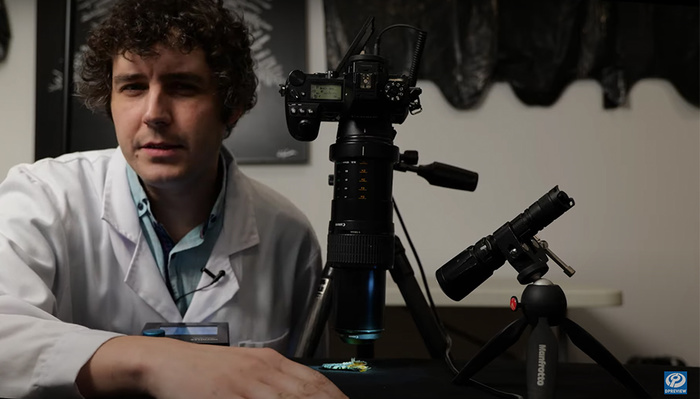
via Fstoppers https://ift.tt/3cniebC
What the Fog? Part One: Where To Expect Foggy Landscapes

In a move that makes traditional photography meet the modern age, a new company based in the United States has introduced a new servi...
Indisposable will develop, scan and send your film photos to your phone
 |
In a move that makes traditional photography meet the modern age, a new company based in the United States has introduced a new service where customers can send in a roll of film, have it developed and scanned, and have the final images sent to their phone. Indisposable aims to make it easier for users to get their film-based pictures online by sending them straight to the device most people use to load images to their social media accounts.
 |
Users can print off a mailing label themselves or have the company send them a dedicated film mailing envelop which is used to get the film to the lab. Indisposable then processes and scans the film, and uploads the images to its iOS app where customers can download them to their mobile device. An app for Android users is on the way the company tells us.
At the same time the images are emailed to the customer as well so they can be saved, edited and posted from a desktop or laptop computer. We are told the turn around time is two to three days, and at the moment scanned images measure 3000x2000 pixels - though that is subject to change as they intend to 'serve more serious photographers'.
 |
The company offers the service for those shooting color negative in 135 and 120 formats, as well as for 135 format black and white film. Users can also purchase single use cameras with 27 (Fujifilm $36.99) or 39 (Kodak $39.99) frames that have the processing service and shipping included in the price.
The standard service doesn’t allow for negatives to be returned, but those who want them can pay an additional $3. Getting a roll of 120 film processed and scanned costs $22.99 while a roll of 135 film costs $19.99 – it’s an extra $2 for black and white. The postage-paid mailing envelops cost $5 for 120 and $2 for 135 film. The company says it plans to offer a printing service in three to four week's time.
For more information see the Indisposable website.
from Articles: Digital Photography Review (dpreview.com) https://ift.tt/39xD1Yj
via IFTTT
via PetaPixel https://ift.tt/39vX892
For Nikon Shooters With Sony Paranoia…
via Fstoppers https://ift.tt/3j42fkc
Use Lightroom to Add Your Signature to Photos in Under 60 Seconds
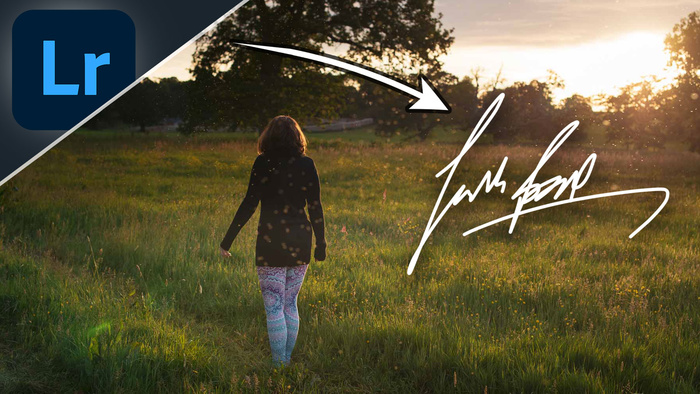
via PetaPixel https://ift.tt/2NPvPye
Fuji GFX 100S: I Found the Landscape Photography Camera of My Dreams
via Fstoppers https://ift.tt/3acTobK
Fstoppers Reviews the SunwayFoto PCL-R5 L-Bracket for Canon EOS R5/R6
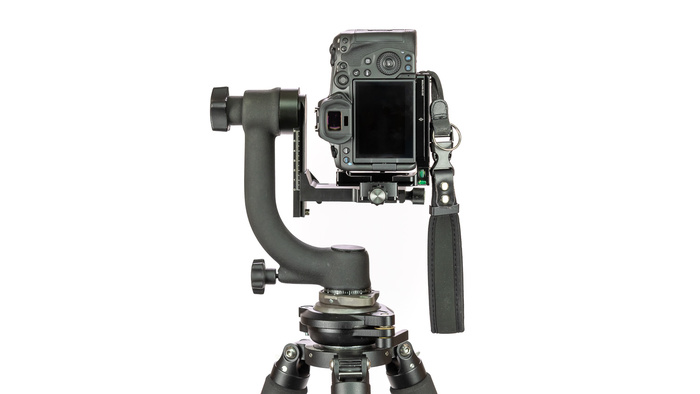
via PetaPixel https://ift.tt/36oZDrG
Leica Adds Perspective Control to Trio of M Cameras via Firmware Update
via Fstoppers https://ift.tt/3oysLmD
Learn How To Remove Dark Circles Under Eyes Using Photoshop in Just a Minute

via PetaPixel https://ift.tt/2MFsctU
An Intro to the Most Basic Photo Edits for Folks Who Don’t Edit (At All)
via Fstoppers https://ift.tt/3j8EJlV
Will Upcoming MacBook Pros Bring USB Ports Back?
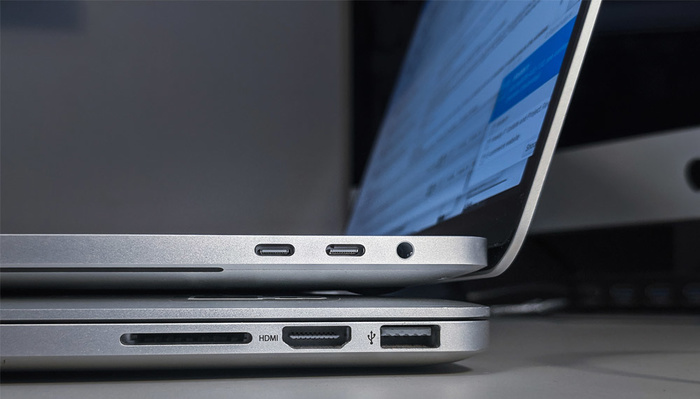
The Fujifilm X-E4's classic looks and compact size almost suggest an X100 series camera with interchangeable lenses. How close does it ...
DPReview TV: Fujifilm X-E4 first impressions review
The Fujifilm X-E4's classic looks and compact size almost suggest an X100 series camera with interchangeable lenses. How close does it come? Chris shares his first impressions of this new camera straight from his basement quarantine.
Subscribe to our YouTube channel to get new episodes of DPReview TV every week.
- Introduction
- A COVID update from Chris
- Handling and design
- Sensor
- Chris and his TV
- Displays
- Who should buy it?
from Articles: Digital Photography Review (dpreview.com) https://ift.tt/3cCsDAv
via IFTTT
via Fstoppers https://ift.tt/3pyqTLT
See Each and Every Layer It Takes To Create a Large Composite in Photoshop

via Fstoppers https://ift.tt/3r0sTwM
Leica Releases Noctilux-M 50 f/1.2 ASPH, an Iconic Lens That Joins Leica's Classics Range
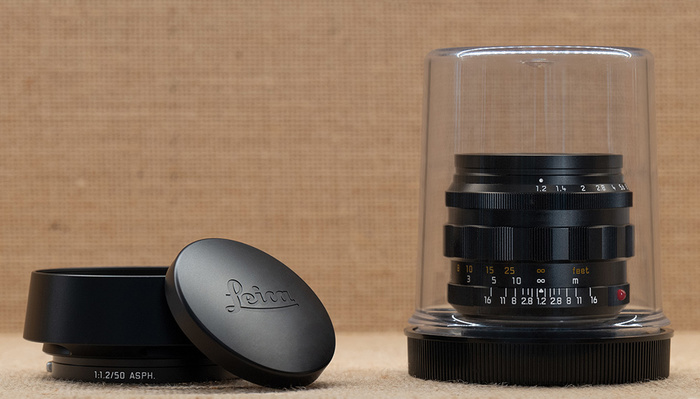
via Fstoppers https://ift.tt/2M7EcEX
5 Tips for Better Portraits When Using Flash
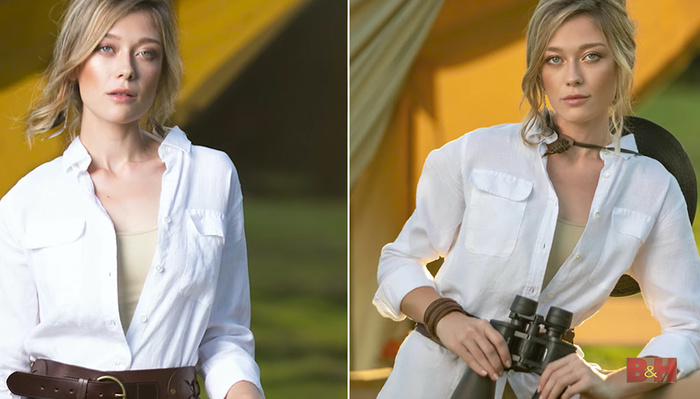
via Fstoppers https://ift.tt/39tQdgw
A Review of the Nikon NIKKOR Z 14-24mm f/2.8 S Lens

via Fstoppers https://ift.tt/3t8vWoK
A Beginner's Guide to Lighting Modifiers

via Fstoppers https://ift.tt/39vD2vF
A Guide To Different Tripod Heads and When You Need Them
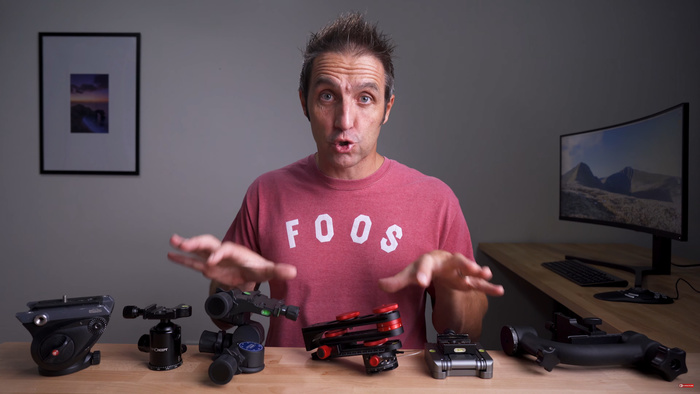
via PetaPixel https://ift.tt/39v4DNy
Samsung Exec Envisions Future Where Photos Are Customized to the Shooter
via Fstoppers https://ift.tt/39vyS77
Skylum Releases Its First Luminar AI Update

via PetaPixel https://ift.tt/3j0qXBZ
First Impressions of the Fujifilm XF 27mm f/2.8 Pancake Lens
via PetaPixel https://ift.tt/3pySIDX
Canon Reveals Price and More Details for its AI Camera, the PowerShot PICK
via Fstoppers https://ift.tt/3tiWO5A
3 Ways Perfectionism Is Dangerous for Creatives
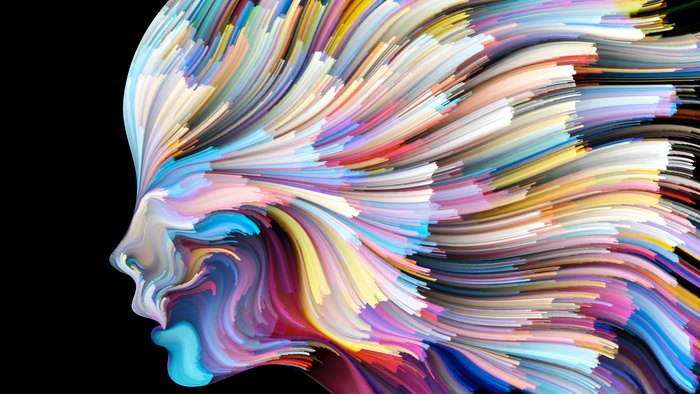

0 comments: